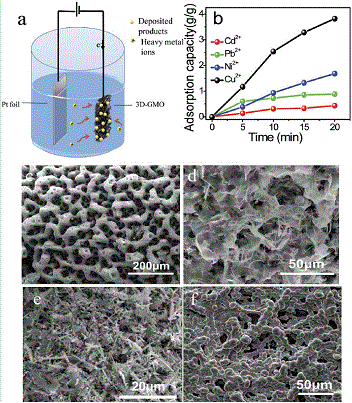Three-dimension (3D) graphene made by CVD has recently raised increasing attentions due to its unique 3D porous structure, excellent physical properties and potential applications. Most of the recent works focus on Ni foam-based 3D graphene and their composites. However, it is limited in the yield and the mechanical strength required in some realistic applications. Therefore, it is significant to exploit a technique to obtain rapidly high-density three-dimension graphene macroscopic objects (3D-GMOs) for the promising applications.
Recently, Prof. LIU Liwei's group at Key Laboratory of Nanodevices and Applications, Suzhou Institute of Nano-Tech and Nano-Bionics (SINANO), Chinese Academy of Sciences (CAS), in collaboration with the Institute of Physics, CAS, has successfully developed a method to prepare rapidly the high-density 3D-GMOs using nickel chloride hexahydrate (NiCl2·6H2O) as a catalyst precursor by CVD process at atmospheric pressure. Further, the free-standing 3D-GMOs are employed as electrolytic electrodes to remove various heavy metal ions. The robust 3D structure, high conductivity (~12 S/cm) and large specific surface area (~560 m2/g) enable ultra-high electrical adsorption capacities (Cd2+,~434 mg/g, Pb2+,~882 mg/g, Ni2+,~1,683 mg/g, Cu2+,~3,820 mg/g) from aqueous solutions and fast desorption. The current work has the significance in the studies of both the fabrication of high-density 3D-GMOs and the removal of heavy metal ions. In addition, this material has potential applications in energy storage, thermal interface material, electromagnetic shielding and so on. This work has been published on Scientific Reports 3, 2125(2013).
The work was supported by National Natural Science Foundation of China, and Ministry of National Science and Technology Projects of China. The project also got assistance from the Nanofabrication Facility and Platform of Characterization & Test of SINANO.

Figure 1. Schematic illustrations displaying the preparation process of 3D-GMOs.(Image by SINANO)

Figure 2. Electrolytic deposition on 3D-GMOs removing heavy metal ions.(Image by SINANO)

